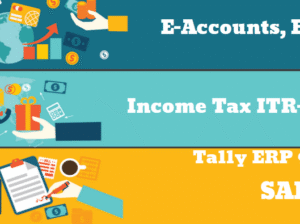How to Optimize Your Website for Maximum Traffic
How to Optimize Your Website for Maximum Traffic
As a professional blogger and digital marketer, I understand the importance of website traffic optimization in driving maximum traffic to your online platform. In this article, I will share with you the key elements and strategies to optimize your website effectively. By following these techniques, you can enhance your website’s visibility, attract more visitors, and ultimately increase your online presence.
The Importance of Website Optimization
Website optimization plays a crucial role in today’s competitive online landscape. It is the process of making changes to your website to improve its performance, visibility, and user experience. By optimizing your website, you can ensure that it is easily discoverable by search engines, such as Google, and is ranked higher in search results.
A well-optimized website not only helps you attract organic traffic but also improves user engagement and conversions. When your website is user-friendly, loads quickly, and provides valuable content, visitors are more likely to stay longer, explore more pages, and take desired actions, such as making purchases or submitting contact forms.
Understanding Website Traffic
Before diving into website optimization techniques, it is crucial to understand website traffic and its various sources. Website traffic refers to the number of visitors your website receives within a specific period. It can be categorized into three main types: organic, direct, and referral traffic.
Organic traffic is generated when visitors find your website through search engine results. It is highly valuable as it indicates that your website is relevant to users’ search queries. Direct traffic occurs when visitors directly type your website URL into their browser or use bookmarks. Referral traffic, on the other hand, comes from external websites that link to your site.
By analyzing your website’s traffic sources, you can gain insights into how users are finding and accessing your website. This data will help you identify areas for improvement and devise an effective website optimization strategy.
Key Elements of Website Optimization
Website optimization encompasses several key elements that work together to enhance your website’s performance and visibility. These elements include:
Conducting a Website Audit
Before you start optimizing your website, it is essential to conduct a comprehensive website audit. This involves evaluating your website’s structure, content, and technical aspects to identify any issues or areas for improvement. A website audit will help you understand your website’s current state, identify potential obstacles, and establish a baseline for measuring future improvements.
During the audit, pay attention to factors such as broken links, duplicate content, page load speed, mobile-friendliness, and overall user experience. By addressing these issues, you can ensure that your website is functioning optimally and providing a seamless experience to your visitors.
Read More: The Power of Web Traffic Lookup: Optimizing Your Online Presence
Keyword Research and Optimization
Keyword research is a critical component of website optimization. It involves identifying the keywords and phrases that your target audience is using to search for information related to your products or services. By incorporating these keywords strategically into your website’s content, meta tags, and URLs, you can improve your website’s visibility in search engine results.
To conduct keyword research, you can use various tools such as Google Keyword Planner, SEMrush, or Moz Keyword Explorer. These tools will provide insights into keyword search volume, competition, and related terms. Choose keywords that are relevant to your business, have a decent search volume, and are not overly competitive. By optimizing your website for these keywords, you can attract targeted traffic and increase your chances of ranking higher in search results.
On-Page Optimization Techniques
On-page optimization refers to optimizing individual web pages to improve their visibility and relevance in search engine results. This includes optimizing page titles, meta descriptions, headings, URL structure, and content. By ensuring that these elements align with your target keywords and provide valuable information to users, you can improve your website’s chances of ranking higher in search results.
When optimizing your web pages, focus on creating unique and engaging content that addresses your visitors’ needs. Use relevant keywords naturally throughout your content, but avoid keyword stuffing, as it can negatively impact your website’s ranking. Additionally, optimize your images by using descriptive alt tags and compressing them to reduce page load times.
Off-Page Optimization Strategies
Off-page optimization refers to activities that are performed outside of your website to improve its visibility and authority. This includes building high-quality backlinks from reputable websites, promoting your content on social media platforms, and engaging with your target audience through guest blogging or influencer collaborations.
Backlinks play a crucial role in off-page optimization. They act as votes of confidence from other websites, indicating to search engines that your website is trustworthy and relevant. Focus on acquiring backlinks from authoritative websites in your industry through guest posting, content partnerships, or influencer outreach. Additionally, leverage social media platforms to promote your content, engage with your audience, and build brand awareness.
Optimizing Website Speed and Performance
Website speed and performance are critical factors in website optimization. A slow-loading website can lead to high bounce rates and a poor user experience, negatively affecting your search engine rankings and conversions. To optimize your website’s speed and performance, consider the following techniques:
-
Minimize HTTP requests by reducing the number of elements on your web pages, such as scripts and stylesheets.
-
Enable browser caching to store certain elements of your website in a visitor’s browser, reducing the loading time for subsequent visits.
-
Optimize your images by compressing them without sacrificing quality.
-
Use a content delivery network (CDN) to distribute your website’s content across various servers, reducing latency and improving page load times.
-
Regularly update your website’s software and plugins to ensure optimal performance and security.
Mobile Optimization Considerations
With the increasing use of mobile devices for browsing the internet, mobile optimization has become crucial for website success. A mobile-friendly website ensures that visitors can access and navigate your site seamlessly on their smartphones or tablets. To optimize your website for mobile devices, consider the following:
-
Use a responsive design that adapts your website’s layout and content to different screen sizes.
-
Optimize your images and videos for mobile by using appropriate dimensions and compressing them for faster loading.
-
Ensure that your website’s fonts are legible on smaller screens.
-
Implement mobile-friendly navigation, such as hamburger menus, to enhance user experience.
-
Test your website’s responsiveness using tools like Google’s Mobile-Friendly Test and address any issues.
By prioritizing mobile optimization, you can provide a positive user experience to mobile visitors and improve your website’s visibility in mobile search results.
Monitoring and Measuring Website Traffic
Once you have implemented website optimization techniques, it is crucial to monitor and measure the impact on your website’s traffic and performance. This will allow you to identify what strategies are working well and make data-driven decisions to further optimize your website traffic.
Utilize website analytics tools, such as Google Analytics, to track your website’s traffic sources, user behavior, conversion rates, and other key metrics. Analyze the data regularly to identify trends, patterns, and areas for improvement. For example, if you notice that certain pages have a high bounce rate, it may indicate a need for further optimization or content improvement.
Tools and Resources for Website Optimization
Optimizing your website can be made easier with the help of various tools and resources available online. Here are some essential tools to consider:
-
Google Analytics: Provides comprehensive website traffic analytics and insights.
-
Google Search Console: Helps you monitor your website’s presence in search results, submit sitemaps, and identify crawl errors.
-
SEMrush: Offers keyword research, competitor analysis, and SEO audit tools.
-
Moz: Provides SEO tools and resources, including keyword research, link building, and site auditing.
-
GTmetrix: Allows you to test your website’s speed and performance, providing recommendations for improvement.







